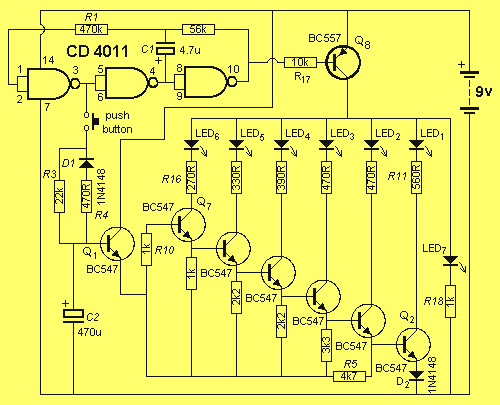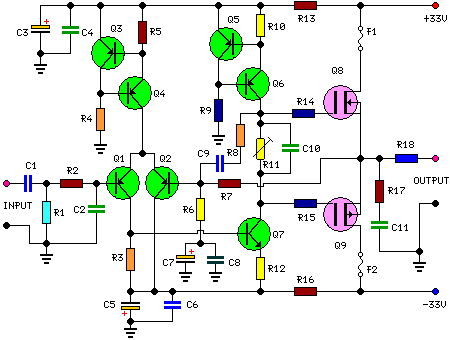
Variable High-Pass Filter Circuit

This second-order filter, designed for audio applications, utilizes an LM1458 or a similar operational amplifier. It is tunable with a cutoff frequency ranging from 30 Hz to 300 Hz. The resistors R2a and R2b are ganged log-taper potentiometers.
The described circuit is a second-order active filter that provides a smooth frequency response suitable for audio signal processing. The use of the LM1458 operational amplifier allows for good performance in terms of bandwidth and noise characteristics, making it ideal for audio applications.
The filter topology typically employed in this design is a Sallen-Key configuration, which is known for its simplicity and effectiveness in achieving the desired filter characteristics. The tuning capability of the filter is achieved through the ganged log-taper potentiometers R2a and R2b, which adjust the resistance in the feedback loop of the op-amp. This adjustability allows for precise control over the cutoff frequency, thus enabling the filter to be tailored to specific audio requirements.
The cutoff frequency (fc) can be determined using the formula:
fc = 1 / (2π√(R1 * R2 * C1 * C2))
Where R1 is a fixed resistor, R2 is the resistance set by the ganged potentiometers, and C1 and C2 are the capacitors used in the circuit. By varying the resistance of the potentiometers, the cutoff frequency can be smoothly adjusted between 30 Hz and 300 Hz.
In addition to the tuning capability, the second-order nature of the filter provides a steeper roll-off rate of -12 dB per octave, which is advantageous in audio applications for eliminating unwanted frequencies. This feature enhances the overall sound quality by allowing only the desired frequency range to pass through while attenuating the rest.
The circuit can be powered by a dual supply voltage, typically ±15V, which is standard for op-amp circuits to ensure optimal performance. Proper decoupling capacitors should be placed near the power supply pins of the LM1458 to minimize noise and improve stability.
Overall, this second-order filter design is a practical solution for audio engineers looking to implement customizable frequency response characteristics in their audio systems. This second order filter which should prove useful in audio applications uses an LM1458 or other similar of op amp. It is tuneable from 30 to 300 Hz cutoff. R2a, b are ganged log-taper potentiometers.
The described circuit is a second-order active filter that provides a smooth frequency response suitable for audio signal processing. The use of the LM1458 operational amplifier allows for good performance in terms of bandwidth and noise characteristics, making it ideal for audio applications.
The filter topology typically employed in this design is a Sallen-Key configuration, which is known for its simplicity and effectiveness in achieving the desired filter characteristics. The tuning capability of the filter is achieved through the ganged log-taper potentiometers R2a and R2b, which adjust the resistance in the feedback loop of the op-amp. This adjustability allows for precise control over the cutoff frequency, thus enabling the filter to be tailored to specific audio requirements.
The cutoff frequency (fc) can be determined using the formula:
fc = 1 / (2π√(R1 * R2 * C1 * C2))
Where R1 is a fixed resistor, R2 is the resistance set by the ganged potentiometers, and C1 and C2 are the capacitors used in the circuit. By varying the resistance of the potentiometers, the cutoff frequency can be smoothly adjusted between 30 Hz and 300 Hz.
In addition to the tuning capability, the second-order nature of the filter provides a steeper roll-off rate of -12 dB per octave, which is advantageous in audio applications for eliminating unwanted frequencies. This feature enhances the overall sound quality by allowing only the desired frequency range to pass through while attenuating the rest.
The circuit can be powered by a dual supply voltage, typically ±15V, which is standard for op-amp circuits to ensure optimal performance. Proper decoupling capacitors should be placed near the power supply pins of the LM1458 to minimize noise and improve stability.
Overall, this second-order filter design is a practical solution for audio engineers looking to implement customizable frequency response characteristics in their audio systems. This second order filter which should prove useful in audio applications uses an LM1458 or other similar of op amp. It is tuneable from 30 to 300 Hz cutoff. R2a, b are ganged log-taper potentiometers.





